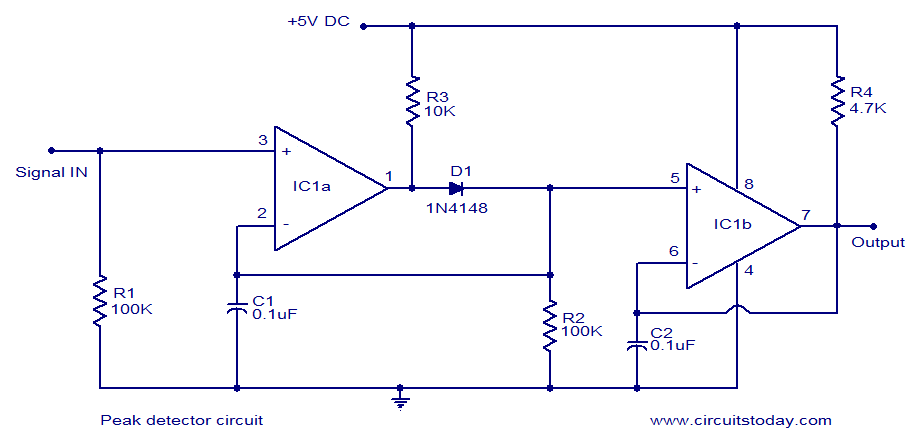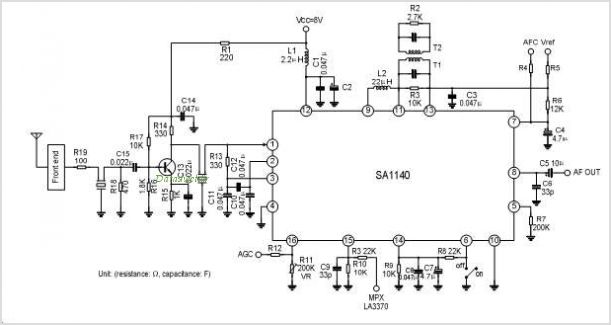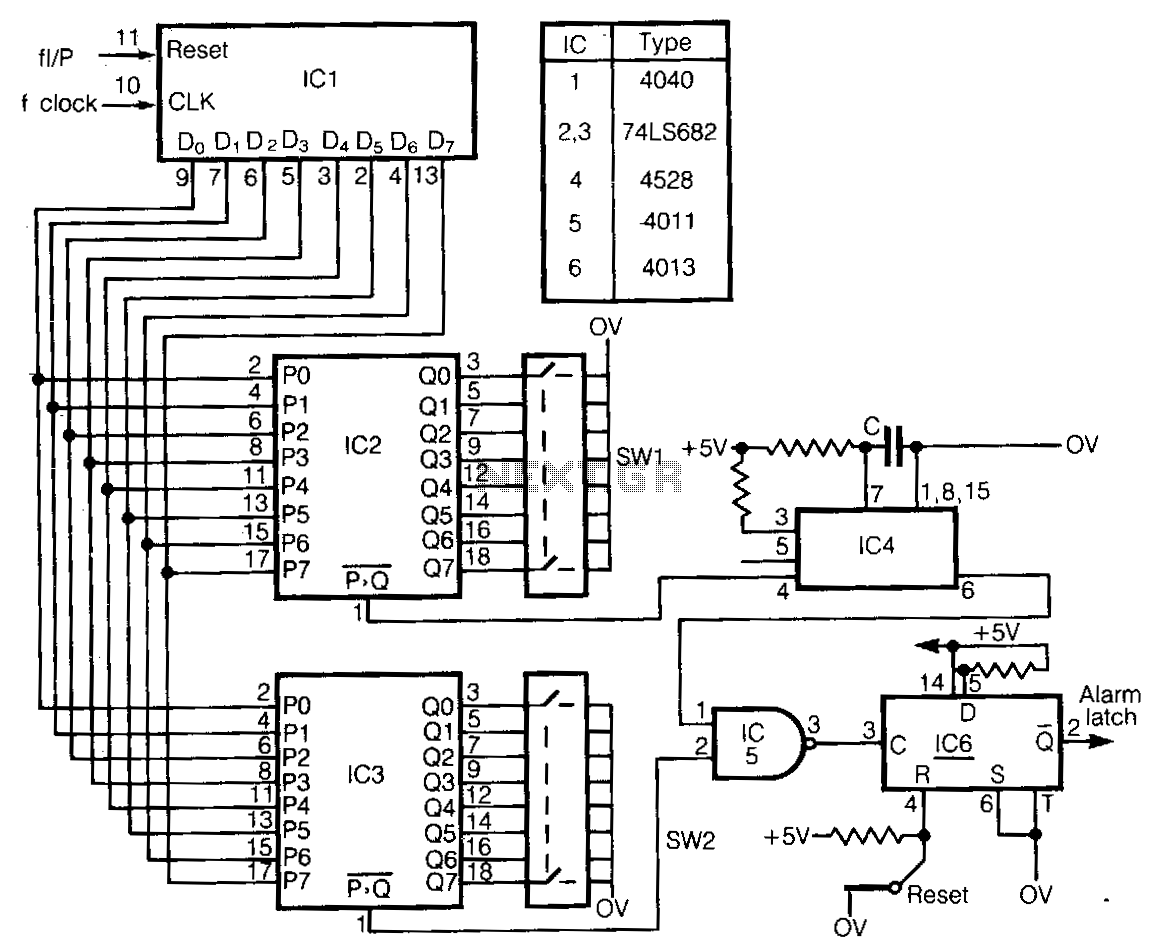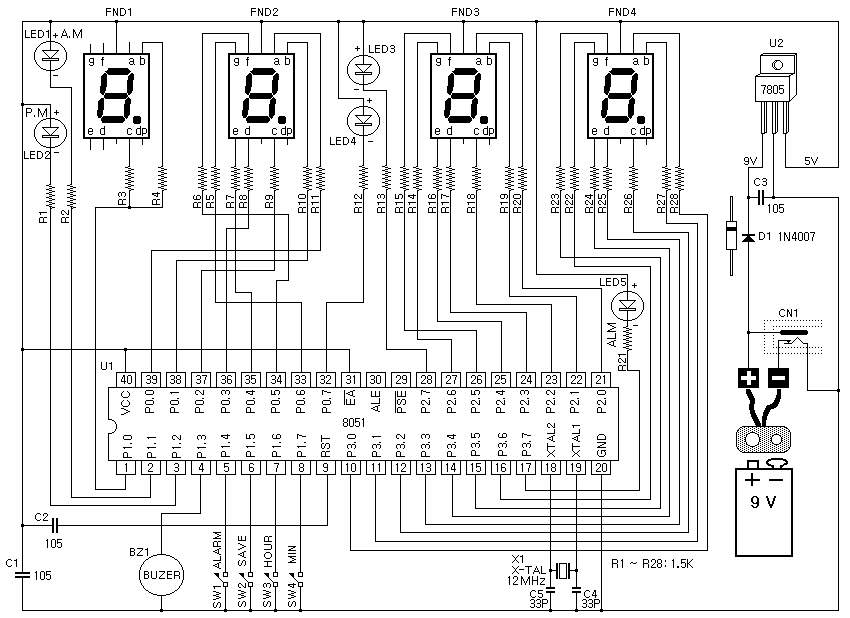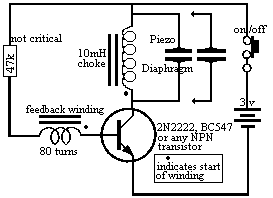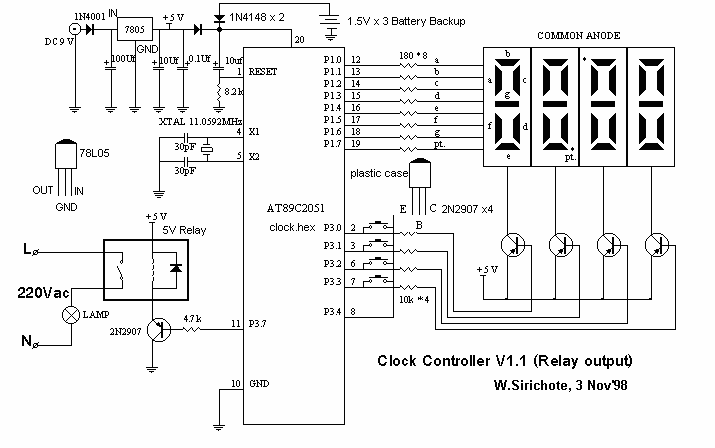
Mini PC Digital Oscilloscope
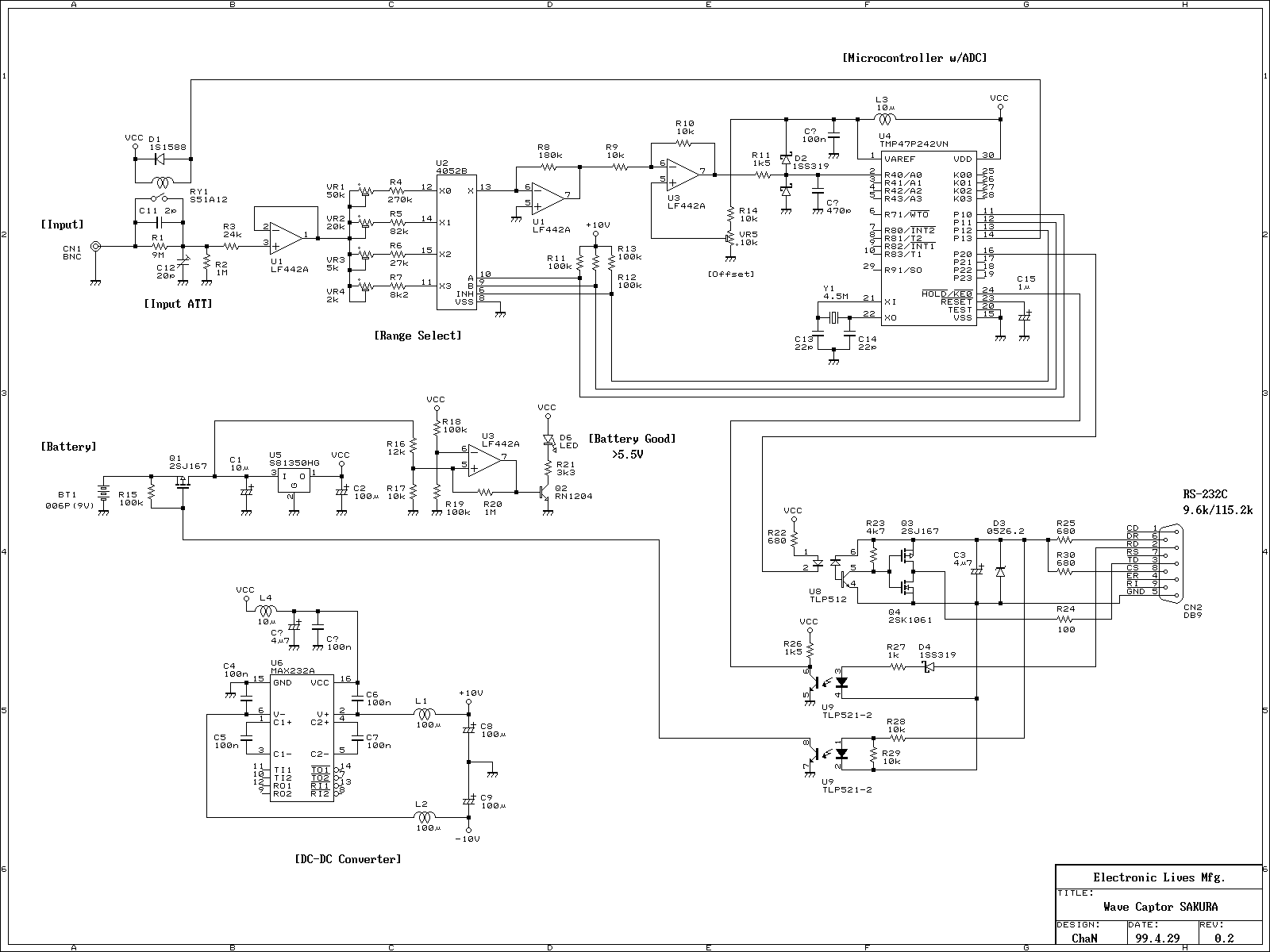
This is a portable oscilloscope adapter that can be held in a breast pocket. Its operation is only sampling and sending to the host PC. Most of the functions of the oscilloscope are processed by the host PC. Therefore, the oscilloscope adapter can be simplified. This oscilloscope adapter uses a TMP47P242VN 4-bit microcontroller for acquisition control. However, it is difficult to obtain and program personally, so it is recommended to replace the microcontroller with any other microcontroller, such as PIC and AVR, when pursuing this project. The details of the acquisition controller are as follows. The communication format between the host PC and oscilloscope adapter is N81 (no parity, 8 data bits, one stop bit). The data transfer rate between the oscilloscope adapter and the host PC is 115.2 kbps. For others, there is no especially technical requirement, only amplitude input signal, sampling with a microcontroller with integrated ADC, and sending waveform data to the host. The sampling rate of 10 kSa/sec is insufficient for a digital oscilloscope. This restriction on sampling rate is linked to the connection between the acquisition unit and the host PC via RS-232C. However, it will be useful for lower frequency signals. Negative and positive powers for the analog circuit are generated with a charge pump of the MAX232AC. The MAX232AC is useful when using an OPAMP with a single +5V power supply. For range changing, this is controlled by the host PC with attenuator and amplification value control commands. This is the minimum required transfer rate for real-time transmission of sampled data of 10 kSa/sec. The command transfer speed from the host PC to the oscilloscope adapter is 9.6 kbps. The acquisition controller will enter a state of command waiting after power-up. One byte of command value range is from 0x50 to 0x5F; any other value will be ignored. The controller outputs lower four bits to P01-P03, waits for one millisecond, and enters the sampling state (sampling loop). In the sampling state, if any data is received from the host PC, the acquisition controller will return to the command waiting state. The host PC must send a 0x00 before sending any command. When the above protocol is satisfied, the control program will be able to function without any patches. However, remaking the control program as a Windows-based application would be preferable to a DOS-based application.
The portable oscilloscope adapter is designed to facilitate the sampling of analog signals and the transmission of this data to a host PC for further processing and visualization. The core component of the adapter is the microcontroller, which handles the acquisition control. The TMP47P242VN microcontroller, while effective, is not readily available, prompting the recommendation to utilize alternative microcontrollers such as the PIC or AVR series, which may offer more accessibility and ease of programming.
The communication between the oscilloscope adapter and the host PC is established through a serial interface adhering to the N81 format, ensuring reliable data transfer at a rate of 115.2 kbps. This high-speed communication is vital for real-time data transmission, particularly when the sampling rate reaches 10 kSa/sec. The RS-232C interface, while a limiting factor for higher sampling rates, suffices for lower frequency applications.
Power management for the analog components is efficiently handled by the MAX232AC, which generates the necessary dual polarity supplies from a single +5V source. This is particularly beneficial when interfacing with operational amplifiers (OPAMPs), enabling them to function optimally across a range of input signals.
The oscilloscope adapter's operation is structured around a command-response protocol. Upon initialization, the microcontroller enters a command waiting state, ready to receive commands from the host PC. The defined range for command values (0x50 to 0x5F) ensures that only valid commands are processed, enhancing the robustness of the system. The system's design also incorporates a delay mechanism to stabilize the output before transitioning into the sampling state, ensuring accurate data acquisition.
In summary, this portable oscilloscope adapter represents a compact solution for signal sampling and analysis, leveraging readily available microcontroller technology and established communication protocols to deliver effective performance in various applications. The emphasis on flexibility in microcontroller selection and the straightforward command structure allows for ease of use and adaptability in different operating environments.This is a portable oscilloscope adapter that it can be held in breast pocket. Its operation is only sampling and sending to host PC. The most of functions of the oscilloscope are processed by host PC. Therefore, oscilloscope adapter can be simplified. This oscilloscope adapter using a TMP47P242VN 4bit microcontroller for acquisition control. But it is difficult to obtain and to programm personaly, so that I recommend to replace the microcontroller with any other microcontroller, such as PIC and AVR, when you want to follow this project. The details of the acquisition controller is as follows. Communication format between host PC and oscilloscope adapter is N81 (no parity, 8 data bits, one stop bit).
Data transfer rate between oscilloscope adapter and host PC is 115.2kbps. For others there is no especialy technique, only amplitude input signal, sampling with microcontroller with integrated ADC, and sending wave form data to host. The sampling rate of 10ksa/sec is dissatisfied as a digital oscilloscple. This restriction on sampling rate is by be linked between acquisition unit and host PC with the RS-232C.
However, it will be useful on the lower frequency signal. Negative and positive powers for the analog circuit is generated with charge pump of the MAX232AC. The MAX232AC is useful when using OPAMP with single +5V power supply. For range changing, this is controlled by host PC with atteneter and amplification value control commands. This is the minimun required transfer rate for real-time transmission of sampled data of 10ksa/sec. And command transfer speed of from host PC to oscilloscope adapter is 9.6kbps. The acquisition controller will enter state of command waiting after power-up. One byte of command value range is from 0x50 to 0x5F, any other value will be ignored. The controller outputs lower four bits to P01-P03, wait for one milisecond, and enter to sampling state (sampling loop).
In sampling state, anything data is raceived from host PC, acquisition controller will return to command waiting state. Host PC must send a 0x00 before sending any command. When above protocol is satisfied, control program will be able to use without any patches. But remaking the controll program as windows based application will better than DOS based application.
🔗 External reference
The portable oscilloscope adapter is designed to facilitate the sampling of analog signals and the transmission of this data to a host PC for further processing and visualization. The core component of the adapter is the microcontroller, which handles the acquisition control. The TMP47P242VN microcontroller, while effective, is not readily available, prompting the recommendation to utilize alternative microcontrollers such as the PIC or AVR series, which may offer more accessibility and ease of programming.
The communication between the oscilloscope adapter and the host PC is established through a serial interface adhering to the N81 format, ensuring reliable data transfer at a rate of 115.2 kbps. This high-speed communication is vital for real-time data transmission, particularly when the sampling rate reaches 10 kSa/sec. The RS-232C interface, while a limiting factor for higher sampling rates, suffices for lower frequency applications.
Power management for the analog components is efficiently handled by the MAX232AC, which generates the necessary dual polarity supplies from a single +5V source. This is particularly beneficial when interfacing with operational amplifiers (OPAMPs), enabling them to function optimally across a range of input signals.
The oscilloscope adapter's operation is structured around a command-response protocol. Upon initialization, the microcontroller enters a command waiting state, ready to receive commands from the host PC. The defined range for command values (0x50 to 0x5F) ensures that only valid commands are processed, enhancing the robustness of the system. The system's design also incorporates a delay mechanism to stabilize the output before transitioning into the sampling state, ensuring accurate data acquisition.
In summary, this portable oscilloscope adapter represents a compact solution for signal sampling and analysis, leveraging readily available microcontroller technology and established communication protocols to deliver effective performance in various applications. The emphasis on flexibility in microcontroller selection and the straightforward command structure allows for ease of use and adaptability in different operating environments.This is a portable oscilloscope adapter that it can be held in breast pocket. Its operation is only sampling and sending to host PC. The most of functions of the oscilloscope are processed by host PC. Therefore, oscilloscope adapter can be simplified. This oscilloscope adapter using a TMP47P242VN 4bit microcontroller for acquisition control. But it is difficult to obtain and to programm personaly, so that I recommend to replace the microcontroller with any other microcontroller, such as PIC and AVR, when you want to follow this project. The details of the acquisition controller is as follows. Communication format between host PC and oscilloscope adapter is N81 (no parity, 8 data bits, one stop bit).
Data transfer rate between oscilloscope adapter and host PC is 115.2kbps. For others there is no especialy technique, only amplitude input signal, sampling with microcontroller with integrated ADC, and sending wave form data to host. The sampling rate of 10ksa/sec is dissatisfied as a digital oscilloscple. This restriction on sampling rate is by be linked between acquisition unit and host PC with the RS-232C.
However, it will be useful on the lower frequency signal. Negative and positive powers for the analog circuit is generated with charge pump of the MAX232AC. The MAX232AC is useful when using OPAMP with single +5V power supply. For range changing, this is controlled by host PC with atteneter and amplification value control commands. This is the minimun required transfer rate for real-time transmission of sampled data of 10ksa/sec. And command transfer speed of from host PC to oscilloscope adapter is 9.6kbps. The acquisition controller will enter state of command waiting after power-up. One byte of command value range is from 0x50 to 0x5F, any other value will be ignored. The controller outputs lower four bits to P01-P03, wait for one milisecond, and enter to sampling state (sampling loop).
In sampling state, anything data is raceived from host PC, acquisition controller will return to command waiting state. Host PC must send a 0x00 before sending any command. When above protocol is satisfied, control program will be able to use without any patches. But remaking the controll program as windows based application will better than DOS based application.
🔗 External reference
